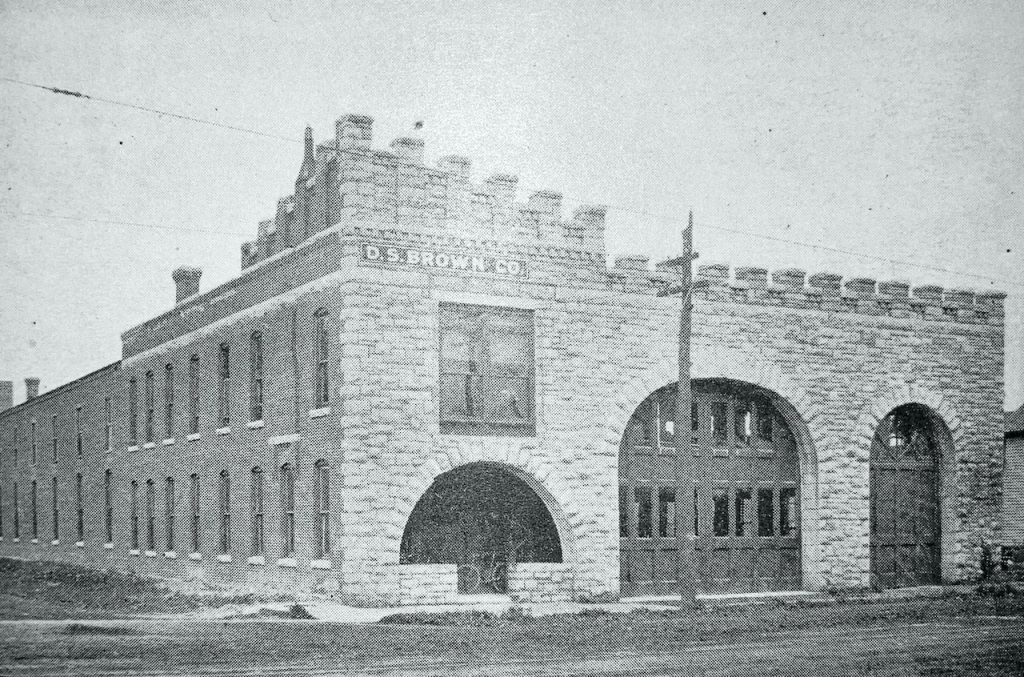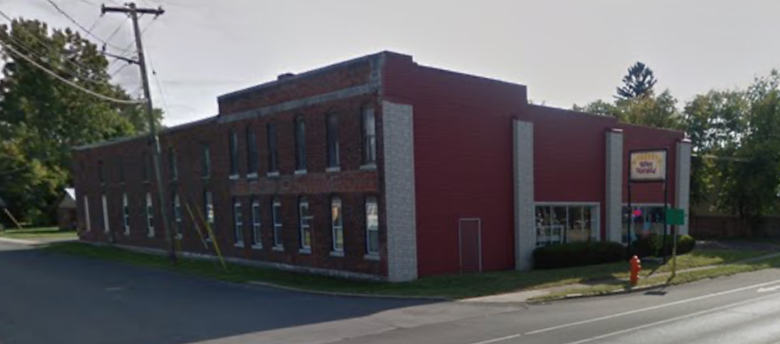Old Car Barn At 780 W Main Street Has Been Home To Many Things Over The Years
You might never guess what some older buildings still standing today were once used for. So is the case for the old car barn located at 780 W Main Street. Currently, as of 2022, the home for Party Rentals, the red building, at first glance, is hardly recognizable as a place that once stored trolley cars.

Per the Watertown Daily Times–
When trolley cars were first used in Watertown in 1891, car barns were located in lower Court Street near Jackson, but shortly afterward an office building and barns combined with a marble front was built on the north side of West Main Street at the corner of Mead.
This building was owned by John C. Thompson, later New York Air Brake company head (and benefactor of Thompson Park), and was leased to the Old Watertown & Brownville Street Railway company until about 1901 when the company, then the Black River Traction Company, built barns and office of its own on the south side of West Main Street near Poplar Street (and the Northern Brewery Company.)

By the mid-1890s, the car barn would be leased to store cars several years after the Watertown electric road was built by John C. Thompson, A. D. Remington, E. M. Gates, George B. Massey and several other capitalists.
Two companies were organized as a result: the Watertown Street Railway Company and the Watertown & Brownville Street Railway Company. A fire at the Brownville car barn in the 1890s may have necessitated the leasing of the 780 W Main Street facility, as neither company owned the premises. The location would be ideal as a centralized place for trolleys that ran from Pearl Street and had to come over the Court Street Bridge on their way to Brownville.

During this time, the Street Railroad Company, as it was occasionally referred to, would propose to make Glen Park an attractive and nearby destination outside of town, just far enough to garner traffic by trolley. Foot-ball and base-ball, as they were spelled then, along with concerts, rides, and other attractions, would see thousands of people every week flocking to Glen Park along the river, which became known as the “Coney Island of the North Country.”
The Watertown Street Railroad Company would own Glen Park after it was created by William H. Smith, who also erected the Smith Building, later known as the Mohican, on Public Square. When the company was purchased and reincorporated as the Black River Traction Company, they would abandon Glen Park sometime after the 1901 season ended, which, coincidently, was about the time City Park, later renamed Thompson Park, was opened.

Around 1900, the place would be home to D. S. Brown Co., and used as a factory for the manufacturing of horse collars. Sill & Bates would take over the manufacturing around 1911 – but only for a year as it was sold to a Syracuse firm.
From the early 1910s, the facility was used by Empsall’s department store as a warehouse. This lasted for a few years until, at some point, it was either shared with or occupied by the Ontario Specialty Company, a branch of the St. Regis Paper Co., which would move to a new location in 1929.

In the 1940s, the former car barn was home to an ice cream shop, Manny’s Ice Cream, for some time. Over the ensuing years, it’s also been home to Watertown Mattress, Salvation Army Thrift Store, Furniture World Warehouse, amongst others.















1 Reviews on “Old Car Barn – 780 W Main Street”
The total destruction of the bridge to the amusement park by Black River ice was much more of a blow to Glen (Amusement) Park. The competition from Thompson Park probably kept the company from building a new bridge, but at the same time, it DID extend the State Street trolley line from High Street all the way to the new park. Many trolley and interurban railways created out-of-town attractions to increase weekend ridership and bring in some more cash but most would not survive much into the 1020s as more people became automobile owners and more roads were built.
From what I’ve read, Glen Park wasn’t even being used by the early turn of the century before the one end of the bridge collapsed in 1903 with the remainder still standing (but later torn down.) There was even discussion of the remaining bridge sections being moved closer to what was referred to as Riverside Park adjacent to the Fairgrounds at that time. The article stated Glen Park hadn’t brought the Street Railroad Co. any money for several years and they resolved to dispose of it and it was sold in 1904 to become part of the Sherman farm.